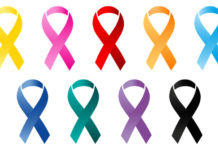It ceased to be fashionable to count proteins, fats and carbohydrates. European and American nutritionists more and more often offer to adhere to the system of nutrition based on the alkaline-acid balance.
Kirsten Dunst, Victoria Beckham, Jennifer Aniston, Gwyneth Paltrow and many other celebrities have switched to the alcaline diet recommended by their nutritionists. How justified is it, and does it have a result?
Foods Transform to Either Acid or Alkali
In the middle of the previous century, scientists realized that all the food coming into the body during metabolism forms either acid or alkali. Subsequently, all the products were separated into two groups (first – harmful, second – useful) and a new nutrition system appeared. Some use it to become slim and always maintain weight within reasonable limits; others see disease prevention as the main purpose. A daily diet should include at least 65-80% alkalilizing foods and 20-35% acidifying. Calorie content in this case is less important.
What Is Alkaline-Acid-Balance?
Before evaluating the system, let’s find out what the alkaline-acid balance is (its level is indicated pH). pH is the proportion between acid and alkali in a solution. pH 7 indicates a neutral environment. When it reduces, the environment becomes more acidic (from 6.9 to 0); when it increases – the environment becomes more alkaline (7.1 to 14). A person normally has the pH from 7.37 to 7.44. Increasing the pH over 7.8 or lowering it under 6.8 is incompatible with life. Buffer systems are responsible for maintaining balance in our body; they are primarily configured for neutralization and removal of acidic degradation products.
Foods Proceeding & Acids
This enhances the acidity of the product:
- heat treatment (frying, boiling);
- sugar, preservatives, additives and acid (vinegar, sauces, mayonnaise);
- long-term storage.
When Are Some pH Levels Dangerous?
It is not necessary to exclude all acidifying foods from the diet. A steady hazardous pH shift may occur only with serious illnesses, including diabetes mellitus, severe rickets in children, uncontrollable vomiting, kidney disease, etc. This condition is called acidosis. It happens that a moderate compensated acidosis occurs almost asymptomatic and can only be detected by examining blood buffer systems and urine composition. One of the first clinical signs is increased breathing, which then proceeds to an abrupt apnea. Along with it, disorders of nervous and cardiovascular systems, gastrointestinal tract etc., may occur. In this case, only a doctor’s appropriate treatment may improve the situation. Changes in lifestyle and diet would not be enough, and ignorant self-treatment can lead to very serious consequences.
How to Stay Healthy?
If health is fine, body buffer systems can successfully cope with the acid load. To maintain youth and vigor it is enough to eat in moderation and do not consume too much refined products and flour, eat vegetables daily, and not to neglect physical activity and walks in the fresh air.
List of Foods Forming Acids
- Refined sugar, jam, preserve, marmalade.
- Alcohol.
- Bacon, sausage, ham, beef.
- Chicken, turkey, red meat, seafood, giblets, pork.
- White bread, pasta, biscuits, donuts, crackers, etc.
- Polished grains (white rice), corn flakes, etc.
- Soda, coffee, black tea and cocoa.
- Canned and candied fruit
Which Foods Form Alcalis?
- Sugar-free fresh fruit juices.
- All fresh vegetables, greens, root vegetables: spinach, kale, broccoli, parsley, watercress, lettuce, asparagus, green peas, white beans, radishes, beets, carrots, etc.
- Wheat, alfalfa and barley.
- Oatmeal, brown rice, basmati rice, and millet.
- Sunflower sprouts, alfalfa sprouts, soy sprouts and mung bean sprouts.
- Watermelon, melon, cantaloupe melon.
- Almonds, coconut, brazil nut.
- Dried fruits soaked in water.






